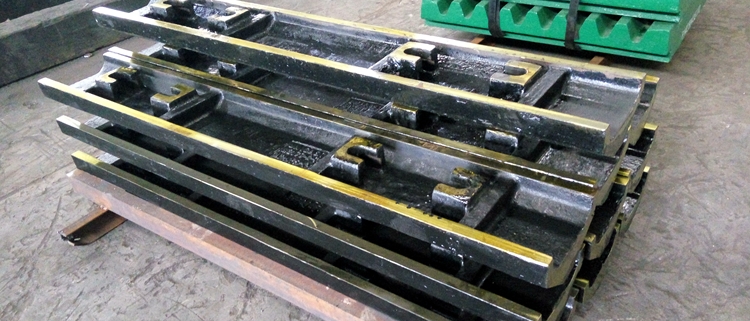Crusher jaw plates are the most important replacement parts for jaw crushers. The replacement cost of the jaw plate is the most important cost in the operation of the jaw crusher. So, Therefore, choosing the correct crusher jaw plate is the key to saving operating expenses.
How to choose the right jaw plates?
There are some tips for choosing the right crusher jaw plates. We will use Sandvik CJ series crusher jaw plates as an example.
Tips 1. Select the right tooth type
Sandvik CJ&JM series jaw crushers have 7 kinds of tooth types. Different tooth type jaw plate suits to crush different materials:
- Wide teeth. This kind of tooth has good wear resistance and is for feed with a lot of fines. It can be used on both fixed and moving sides.
- Wide wave teeth. This kind of tooth is used for slabby and less abrasive feed material. The advantages are: Feed is relatively easy to crush and has good top-size control.
- Sharp teeth. This kind of tooth is used for flaky feed material with a lot of fines. The advantages are: Good gripping ability; Very good top-size control; Highly recommend if the AI is not high.
- Corrugated teeth. This kind of tooth is used for crushing less abrasive materials. The advantages are Good for small CSS settings; Good top-size control.
- Coarse corrugated teeth. This kind of tooth is used for crushing abrasive materials.
- Heavy-duty teeth. This kind of tooth is used for crushing very abrasive materials.
- Heavy-duty ultra-thick. This kind of tooth is used for crushing very very abrasive materials.
Tips 2. Select the right tooth design
Sandvik CJ&JM series jaw crushers tooth has 4 kinds of designs.
- One-piece design. One-piece jaw plates offer safer, easier, and faster exchanges and require the use of a two die-lifting tool due to the component weight. The plates should be rotated more than three times during their life length to maintain the nip angle and to utilize the manganese steel maximally. A delayed flip of the plate often results in a poor nip angle, which often leads to a higher wear rate to premature replacement. The end result is a higher cost per ton for the wear liner alone.
- Two-piece design. The two-piece jaw plate configuration creates one large piece when fastened on the crusher.
- Three-piece design. The three-piece jaw plates are lighter and offer a longer lifetime, lower wear rate, lower cost per ton, and require lower wear part inventory. However, installation of these jaw plates takes more time and must be done carefully to lock both two pieces to the middle wear plate fastener.
- Six-piece design. The six-piece jaw plates are designed for the largest jaw crushers. They are like a three-piece design however each piece is half the size after considering safety. weight and manufacturing aspects.



